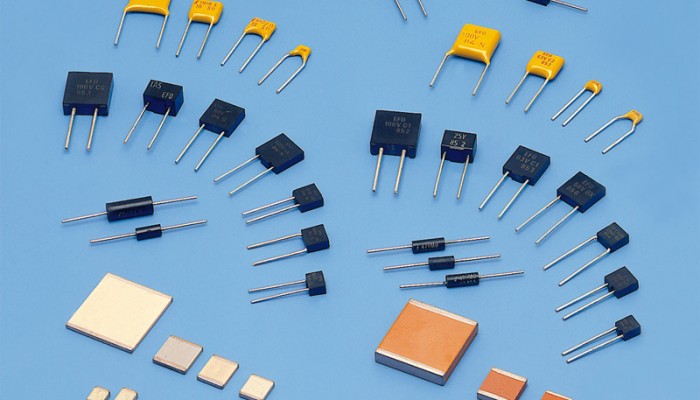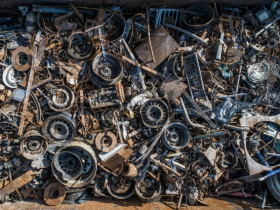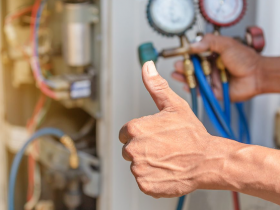Capacitors are the electronic devices which are used to store electrical charge. They are passive devices since they don’t have any moving component in them. In a capacitor, the two layers of electrical conductors are separated by an insulating dielectric layer.

Although the working principle of all capacitors is the same, there are many ways to classify them. They come in a variable as well as in fixed capacitance. The materials from which they are commonly made are:
- Ceramic Capacitor
- Electrolytic Capacitor
- Polyester Capacitor
- Poly Carbonate Capacitor
Ceramic Capacitors
Ceramic capacitors are widely used capacitors in the electronics industries. In these capacitors, there are alternate layers of metal and ceramic material. The ceramic material acts as a dielectric and metal layer act as electrodes.
Electronic circuits that are produced by Surface-Mount Technology (SMT) need especially made SMT/SMD (Surface-mount Device) capacitors so that it can be mounted on the circuit board. There are SMD Capacitor Kits which makes it very convenient to obtain a specific capacitor quickly and accurately.
The dielectric in a ceramic capacitor is made from a mixture of finely ground granules of paraelectric or ferroelectric materials. This powdered material is then mixed with some oxides to achieve the properties that are desired from the ceramic material. The dielectric material defines the electrical behavior of a capacitor, which ultimately determines its application.
EIA (Electronic Industrial Alliance) and the IEC (International Electrotechnical Commission) have standardized these classes and defined them according to their application.
They are divided into two classes:
Class 1: These have high stability against the change in temperature and voltage, and to some extent, frequency. They are made from paraelectric materials such as Titanium Dioxide (TiO2). Its properties are modified by adding additives of Zinc, Zirconium, Niobium, Magnesium, Tantalum, Cobalt and Strontium. These additives are responsible for getting the desired temperature characteristics.
Because of the use of paraelectric materials, these capacitors have very low permittivity, typically in the range of 6 to 200. This makes them bigger in size as compared to other ceramic capacitors. Consequently, their capacitance values also lie in the lower range. Their electrical losses are very low and have dissipation factor of around 0.15%. Low energy loss also makes them a good choice in applications where high Q factor is necessary.
The capacitor “NP0” (also known as “C0G” in EIA code) has 0 drift with temperature. The “0” indicates that they have zero temperature coefficient (actually α ±0•10−6 /K ). This capacitor has capacitance variation (dC/C) of only ±0.54% within the temperature range −55 to +125 °C, which makes it very interesting from a technical point of view.

Class 2: These capacitors are made from ferroelectric materials like Barium Titanate (BaTiO3). The additives that are used for making these capacitors are Aluminium silicate, magnesium silicate and aluminium oxide.
Since these capacitors are made from a ferroelectric material, they have high to very high permittivity (from 200 to 14,000). This is the reason why they have a high volumetric efficiency (i.e need less volume for high values of capacitance). The downside of Class 2 capacitors is that their capacitance is not stable. Their capacitance changes with the change in temperature as well as with the change in voltage. Also, this capacitor ages with time.
The most commonly used Class 2 capacitors are X7R, X5R and Y5V (EIA codes). The following graph describes the relation between temperature and capacitance of X7R and Y5V with Class 1 capacitor NP0:

Class 3: These capacitors have even higher permittivity than the Class 2 capacitors (up to 50,000). They have very undesirable electrical characteristics, accuracy and stability. These are the reasons why this type of ceramic capacitors has become obsolete. Because they are so unusable, they aren’t standardized by IEC.
Ceramic capacitors find applications in various electronic industries, more than one trillion pieces of these capacitors are produced every year.





























